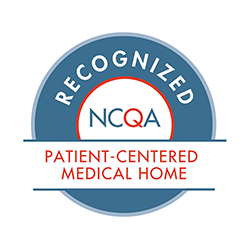Occupational Therapy
Our occupational therapists work to get to know you, your medical history and your immediate needs.
As much as you want to move and get things done, your body and your mind might not always cooperate. Working with an occupational therapist can help you develop more control over your abilities and increase your independence.
Occupational therapy is one of the many healthcare services offered at Long Island Select Healthcare (LISH).
What Is Occupational Therapy?
If you could use a hand with making the most of your abilities and functioning in your environment, then you might benefit from occupational therapy services. Frequently known as OT, this type of therapy helps people get better at accomplishing everyday tasks.
During OT sessions, you may engage in a variety of creative activities. Some of them may seem fun or silly, but each one will be done with a particular goal in mind. Depending on your specific needs, you might sort small objects, play with a large ball, squish dough, trace shapes or practice buttoning a shirt.
OT is performed by occupational therapists and their assistants. To become a licensed and certified occupational therapist, a person must earn a master’s degree and pass a national exam. This extensive training is important for ensuring that therapists are prepared to address their clients’ diverse needs.
OT vs. PT
Occupational therapists and physical therapists sound similar, but they play different roles.
OT is a holistic therapy that teaches you to be successful in your environment. You’ll draw on your OT skills whenever you have a daily task to accomplish. In addition to equipping you with hands-on techniques, the therapist may also suggest ways to adapt your home, school or work settings in ways that make it easier for you to get around.
Physical therapy (PT) focuses more on addressing specific health problems. For example, you may receive PT after losing a limb or sustaining an injury to your back. After going through PT, you may have less pain, or you may be more adept at using mobility equipment.
Occupational and physical therapists may work together to address some of your concerns. They may also coordinate with a medical doctor known as a physiatrist who addresses whole-person wellness.
Improving Your Abilities
Your OT journey will begin with an evaluation. Your therapist will conduct assessments to evaluate your current skill levels and determine where you need therapeutic interventions.
During your OT evaluation, the therapist will consider your:
- Attention span
- Cognitive skills
- Fine motor skills
- Gross motor skills
- Response to sensory stimuli
- Visual perception
Caregivers can offer important insights that may contribute to the evaluation.
After your evaluation, your therapist can tailor a treatment plan for you. It will include activities that address your specific needs.
Therapy may help you get better at accomplishing tasks like:
- Catching a ball
- Cutting with scissors
- Eating a meal
- Getting along with your peers
- Getting dressed
- Organizing your school or work supplies
- Responding to stimuli in your environment
- Taking a bath
- Washing dishes
- Writing your name neatly
You will engage in hands-on activities during therapy sessions, and you may also be given exercises to use at home.
Making Adaptations to Your Environment
Your occupational therapist may also suggest ways to make your surroundings work better for you. Small changes around your home can make a big difference in how easy it is for you to get things done.
For example, you could add adaptive equipment to your bathroom. A lift can raise the toilet seat to a more comfortable level, and rails can make it easier to access the bathtub and the toilet.
You can also use tools to make getting dressed a less frustrating experience. A special handle is helpful for putting on shoes or socks. The therapist might recommend that you replace buttons and shoelaces with easier fasteners, such as hook-and-loop tape or elastic straps.
Other adaptive devices include:
- Armrests
- Pencil grips
- Plate or bowl stabilizers
- Reacher tools
- Weighted forks and spoons
- Zipper pulls
Your occupational therapist may recommend that you use a variety of these tools. Additionally, you may need splints or other devices to support your joints and muscles.
Article 16 Services at LISH
Long Island residents who qualify for Article 16 rehabilitation services can receive occupational therapy at LISH. This means that you must have a developmental disability that was diagnosed before age 22.
Many different people can benefit from these services. For example, you may want to pursue an occupational therapist’s services if you or your child has cerebral palsy, spina bifida or autism.
Make Your OT Appointment
Receiving occupational services at LISH can help you interact with your environment and do the things you want to do. Through hands-on activities, you may learn to increase your independence, control your emotions and meet your goals.
Our occupational therapists offer services at several LISH facilities in Suffolk County. Call (631) 650-2510 to make your appointment. An online contact form is available for inquiries as well.


















